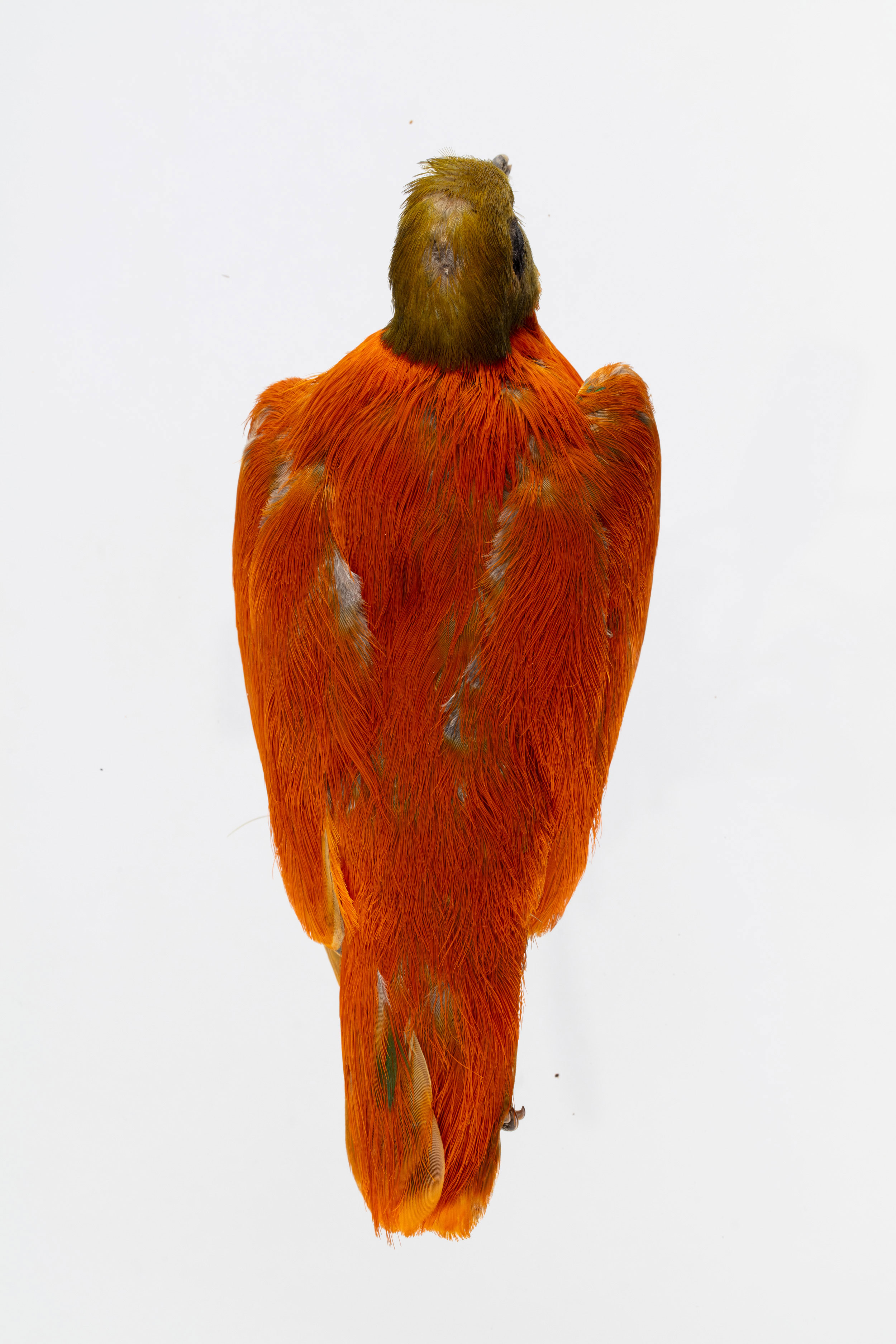

Context makes all the difference. When you walk into the sacred space of this museum and encounter this magnificent bird, prone, but still luminescent in his orange feathers, you likely stop and marvel. The day before I came down to see him, lovingly conserved, I saw another, no less magnificent bird, also prone, but alone and unnoticed, dead on the Law School steps. He was a red headed, green winged Alisterus scapularis or King Parrot, perhaps making his way down to the trees in Victoria Park. Because he was lying beside a stack of metal scaffolding that had been left on the ground, waiting to be erected for Welcome week. I assume he flew his soft body into the unyielding pile, unaccustomed to it being there on a route he likely takes fairly regularly.
When we humans build structures to support our learning, our comfort, our relationships, our aesthetic experiences, how often do we stop and reflect on who else occupies, moves through, eats, and rests in the spaces we are reshaping and filling? Our built environments can, like this museum, invite people into more ethical relationships with earth others. Or they can be so driven by particular human interests and desires, that the Earth others whom they affect do not even show up as present, let alone subjects of concern or justice. Today for example, we can erect buildings comprising large panels of glass which, thanks to recent technological advances, are completely transparent. The green tinge that once interfered with a perfectly unimpeded view onto the world unfolding before or beneath us has been removed. But with that process of ‘perfecting glass’, so too did we deprive birds of the ability to see that they were flying towards a solid surface. Now, when the light falls a certain way onto our hyper-modernist building, our avian neighbours see pure reflection, of sky or perhaps of trees, and they keep flying.
The juxtaposition of these two birds leaves me wondering about who birds are for us in this place of learning. What a bitter irony that we were setting up structures to make our new (human) students feel welcome as they entered their university home, but in so doing, made someone else’s home deadly. Returning to the birds so mindfully encased here, perhaps the regret we experience for those who have disappeared from the earth can be brought into the present, so that we become more ethically attuned to the birds with whom we share this place right now.

